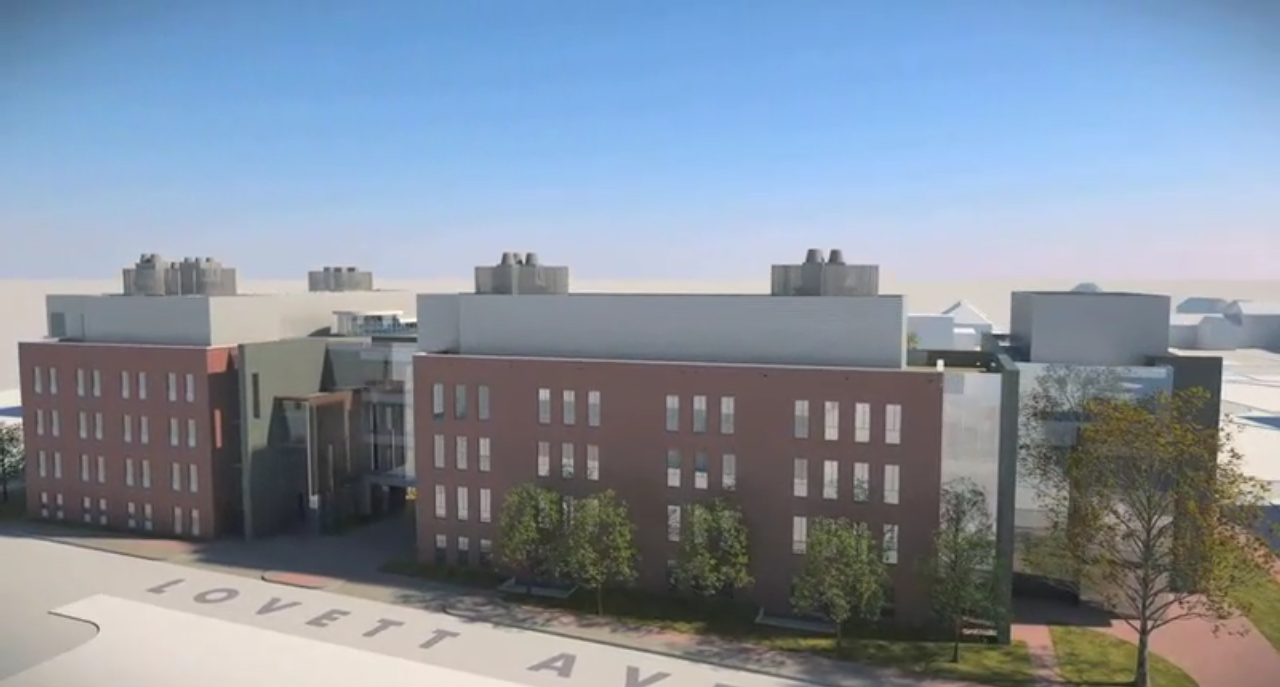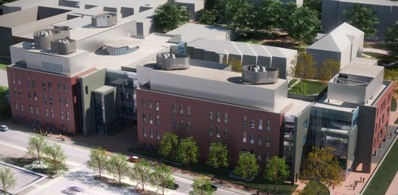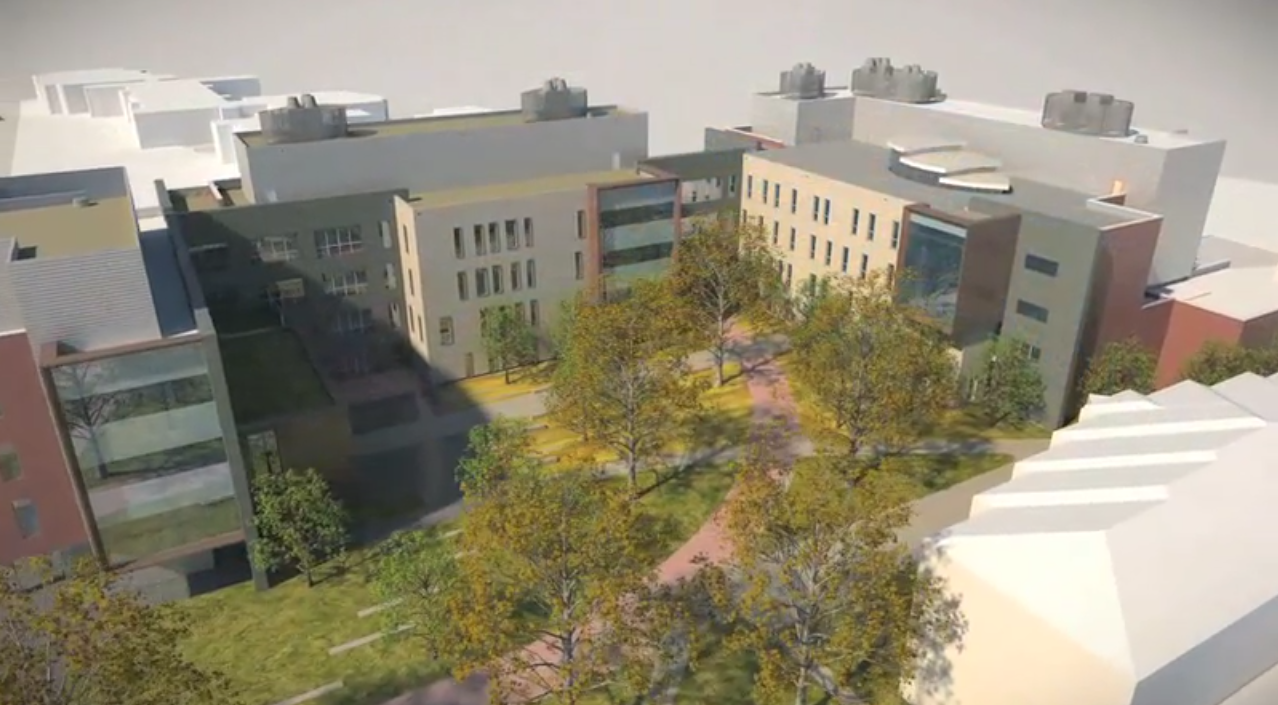
| Thesis
Proposals |

| Interdisciplinary Science &
Engineering Building |





|
The
redesign
of
the
exhaust
system
will
incorporate
hydronic
cooling
systems.
This
will
include
chilled
water
pumping
to
the
chilled beams along with fan energy needed for the
ventilation
**Revision:
In addition to the resizing of fans and pumps a computational fluid
dynamics (CFD) study will be conducted in order to determine the
feassability of the passive chilled beams with the
|
| MAE Proposal |
|
Initial:
In
order
to
take
a
holistic
approach
to
cutting
energy
use of this building, the building’s current
façade will be
compared to several energy **Revision 1: Architectural Coordination; Both method’s proposed for the ventilation system redesign will require the addition/rerouting of ductwork, addition of chilled beams, and changes in ceiling layouts. Once again, in order to address total system integration a coordination model will be made from the perspective of an architect to insure that the changes made to the building mechanical system will integrate into the current interior design of the building. This will require a 3D model of any space above and below the ceiling, where ductwork is added or rerouted. Also, a revised ceiling plan will be made for the addition of the chilled beams in method 2.This revision was made to the initial proposal so that this breadth is now better integrated with the depth topic.
**Revision 2:
Acoustical Evaluation;
After
analyzing
the
effects
of
each
system
on
the
architectural
layout,
it
was determined that there is little to no change in the current
design. The majority of the ductwork added in both of the redesigns
either incorporated the currently installed ductwork or was smaller
than the existing ductwork. Due to this fact I felt that my
architectural breadth was lacking and needed something else. The
ceiling layouts for the proposed chiled beam system will still be
incorporated but a need for an acoustical analysis of the transfer fans
was realized. In the current design, all VAV boxes located close to a
space incorporated sound attenuation. The transfer fans in this design
lead straight from one space into the labs and could produce
significant noise in both the space where the air is being transfered
from and into the labs. An acoustical analysis of the transmitted fan
noise into the labs and into a typical classroom space will be
conducted.
|
| Architectural Breadth |
|
Initial:
The
estimated
steam
heating
load
for
ISEB
is
19,000
PPH.
This
heating
load
includes
domestic
water
heating
and
steam-to-steam humidifiers, therefore there will be a significant
**Revised:
Redesigning all
electrical systems impacted by the mechanical redesign;
The mechanical depth
redesign proposed in this report will directly affect the building’s
electrical
system. Loads must be recalculated, wires must be resize, panel boards
must be
reconfigured, and any other electrical equipment that served the
original
mechanical equipment must be examined. This provides a great
opportunity to
address system integration. This breadth will also fully analyze all of
the
costs associated with any and all changes that must be made to the
electrical
system due to the changes proposed in the mechanical depth. |
| Electrical Breadth |
|
For
the
redesign
of
the
this
building's
mechanical
system
two
alternative
methods
of
handling
the
lab
exhaust
will be compared
against the current system. The goal of these methods is to reduce the amount of outdoor air brought into the building, therefore reducing the cooling load in the summer and heating load in the winter. The first method will implement a chilled beam system for rooms where the sensible load dictates. This system will also implement a direct exhaust particulate sensor system, that will be tied into the building's DDC system. The second method will take a different approach to the lab ventilation by using excess ventilation air from the non-lab spaces and transfering it to the labs to be used. |
| Mechanical Proposal |
be aware that the information contained herewith is considered a work‐inprogress for this thesis project. Modifications
and changes related to the original building designs and construction methodologies for this senior thesis project are
solely the interpretation of Christopher Ankeny. Changes and discrepancies in no way imply that the original design
contained errors or was flawed. Differing assumptions, code references,requirements, and methodologies have been
incorporated into this thesis project; therefore, investigation results may vary from the original
design.









